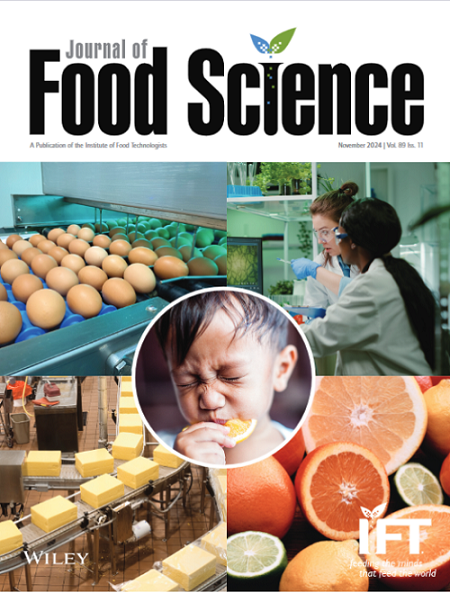Molecular and microstructural changes of chicken breasts in preheating-freezing-reheating process: The role of ice crystal formation and growth
Abstract
The molecular and microstructural evolution of meat during preheating-freezing-reheating process remained unclear, limiting the quality improvement of prepared dishes. This study revealed this evolution of chicken breasts by comparing three groups with various preheating states to fully preheated (control) and fresh samples. By ice crystal characterization, fresh samples typically form small, evenly distributed intracellular ice crystals, whereas preheating promoted the formation of irregular extracellular crystals. All samples exhibited larger ice crystals after recrystallization. Results showed that ice crystal formation primarily induced protein unfolding and aggregation, while recrystallization predominantly drove lipid oxidation and microstructural damage. Control samples displayed extreme aggregation and microstructural damage, with significantly higher turbidity and hydrophobic interaction values (p < 0.05), leading to texture deterioration. On the other hand, moderate preheating samples (CV2 [where CV is cooked value], preheated to core temperature reached 68.05°C) resulted in lower protein aggregation and water loss, with lower values in turbidity, intrinsic fluorescence intensity, covalent bonds content, and area of T2i relaxation peaks, enhancing texture quality. Scanning electron microscopy images indicated that intracellular ice crystals in fresh samples primarily caused cellular structure damage, and extracellular ice crystals in control and CV2 samples contributed to the disruption and curling of connective tissue. Overall, preheating impacted the final qualities by affecting ice crystal properties, resulting in a better maintained molecular structure and microstructure of CV2 samples compared to the control samples.
Practical Application
This study revealed the molecular and microstructural change of chicken breasts during preheating-freezing-reheating process, recommending an easy way to improve prepared meat qualities: reducing the preheating state to an appropriate level rather than fully preheated. Besides, the different ice crystal properties in chicken breasts with different preheating states offered a theoretical foundation for frozen control strategy of prepared meat. These results provide critical insights into the quality control and industrial upgrade of prepared dishes.

 求助内容:
求助内容: 应助结果提醒方式:
应助结果提醒方式:


